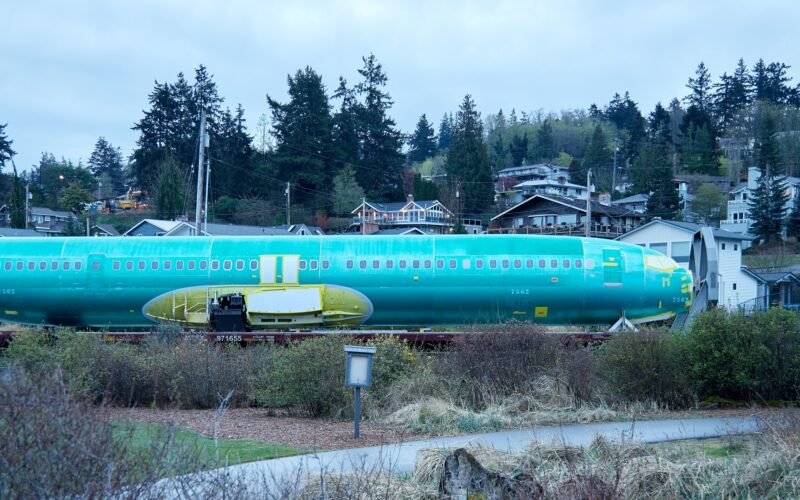Collapsed rail bridge causes logistical puzzle to maintain 737 MAX production

Boeing’s 737 MAX and P-8 Poseidon fuselage production faces challenges due to a rail bridge collapse in Washington. The collapse disrupted the transportation route between Spirit AeroSystems in Kansas and Renton, Washington, where unfinished fuselages are assembled.
Following the collapse on June 24, 2023, Boeing has been compelled to find an alternative solution to continue receiving fuselages. They have resorted to loading the unpainted and unfinished 737 fuselages onto trucks near the crash site. Once the trucks cross the Yellowstone River, the fuselages can be transferred back onto a train for transport to Renton, Washington, for final assembly.
The rail bridge repairs are expected to take weeks, according to The Unified Command, consisting of officials from US federal and state agencies. However, it remains unclear how this will impact the production rate of the 737 MAX.
Boeing has already faced production issues with the 737 MAX this year. Reports in March indicated possible software issues with “not taken up” aircraft when reconfigured for other airlines. Additionally, in April 2023, Spirit AeroSystems discovered a non-standard manufacturing process used on certain 737 airplanes, causing delivery delays and estimated seat reductions for customers during the summer.
Despite these challenges, Boeing’s president and CEO, David Calhoun, affirmed the planned production rate increase during the Bernstein Strategic Decisions Conference in June 2023. However, the production issue has resulted in a potential loss of around 25 airplanes in a year.
In May 2023, Boeing resumed delivery of inventoried 737 MAX aircraft, but Spirit AeroSystems estimated a financial impact of at least $31 million for 2023 due to these production problems.
